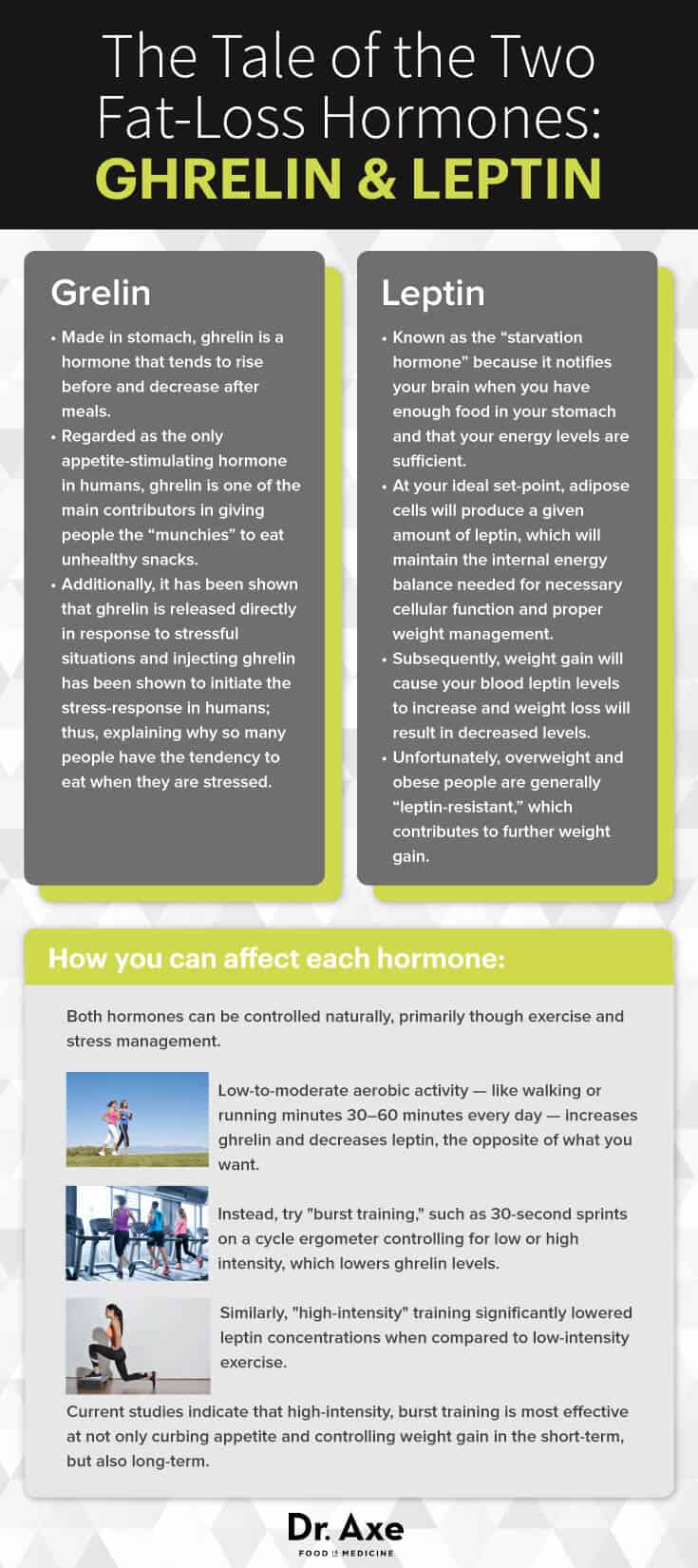Turn On Your Fat-Burning Switch with Ghrelin & Leptin
In the 1950s, medical and scientific communities began suggesting artificial hormone therapy to help people lose weight. Topping the list is one of the most controversial and hotly debated gimmicks. The HCG diet supposedly helps men and women achieve “miraculous” weight loss through a combination of HCG and a diet restricted to 500–800 calories per day.
Basically, it’s a starvation diet.
Human chorionic gonadotropin (HCG) is a hormone produced during pregnancy to release a woman’s fat stores to her baby. HCG stimulates the hypothalamus to start fat metabolism, which provides nutrients for the baby. Remove the baby from the equation and those fat-turned-nutrients need somewhere to go.
The theory behind this misguided use of hormone therapy is that the extra adipose tissue (fat) released in the bloodstream supplements the calories people aren’t consuming each day, helping dieters lose up to two pounds per day. Sadly, ever since Dr. Oz openly changed his mind about HCG and aired a special report on it in 2012, more people are on the diet than ever before.
According to the Mayo Clinic, two important facts are crucial to understanding this type of hormone therapy for weight loss:
- The HCG diet is not safe and doesn’t work long term, as most people will regain the initial weight that they lose.
- The Food and Drug Administration has actually advised people “to steer clear from over-the-counter weight-loss products that contain HCG.” (1)
This is not to say, however, that hormones can’t be manipulated to reach weight-loss goals. It’s important to understand that we have a great deal of control over our hormones and don’t need to resort to unnatural, harmful methods to lose weight fast and reach our ideal weight.
In fact, according to endocrinologists from the VU University Medical Center in Amsterdam, two of the most important hormones to focus on for natural weight loss and energy balance are ghrelin and leptin. (2)
Ghrelin and Leptin — Our Fat-Loss Hormones?
Ghrelin is a hormone made in the stomach that tends to rise before and fall after meals. Published in the journal Addiction Biology, it was found that inducing short-term feeding and long-term weight gain, ghrelin reduces fat utilization and is a vital component of the food reward cascade controlled by the brain’s pleasure-reward system. (3) Regarded as the only appetite-stimulating hormone in humans, ghrelin is one of the main contributors in giving people the “munchies” to eat unhealthy snacks.
In addition, ghrelin is released directly in response to stressful situations, explaining why so many people have the tendency to eat when they’re stressed. By perpetuating the stress cycle, ghrelin contributes to weight gain by maintaining a person’s stress levelsand giving that person the strong urge to snack.
Leptin, on the other hand, is known as the “starvation hormone” because it notifies your brain when you have enough food in your stomach and your energy levels are sufficient. At your ideal set point weight, adipose cells produce a given amount of leptin, which maintain the internal energy balance needed for necessary cellular function and proper weight management. (4)
Because the body produces leptin based on body fat percentage, weight gain causes your blood leptin levels to increase, and weight loss will result in decreased levels. Unfortunately, overweight and obese people are generally “leptin-resistant,” which contributes to further weight gain because they require more food than necessary to feel “full” or satiated.
Three points to remember:
- Ghrelin is a fast-acting hormone that plays a vital role in meal initiation and contributes to weight gain.
- Leptin mediates long-term regulation of energy balance and suppresses food intake, thereby inducing weight loss.
- Both hormones can be controlled naturally, primarily though exercise and stress management.
Burst Training for Life
For years, generic weight-loss advice given by most health care providers focused on low-to-moderate aerobic activity, such as walking or running 30–60 minutes every day. Research from the past decade continues to report that ghrelin increases and leptin decreases after these types of exercises, making this notion obsolete. Instead, burst training is one of the best ways to manage unhealthy hunger behavior, burn belly fat, and manipulate ghrelin and leptin to lose weight.
For example, in a study conducted by the University of Bath (U.K.), various hormone levels in individuals who participated in burst training (i.e., 30-second sprint on a cycle ergometer controlling for low or high intensity) showed that:
- Total ghrelin concentrations declined after high-intensity sprinting and were significantly lower after 30 minutes of recovery than they were pre-exercise, suggesting that burst training can not only contribute to weight loss, but help curb appetite long term. (5)
- Growth hormone (attributed to weight loss) concentrations were greater in the high-intensity than in the low-intensity group, suggesting that burst training affects other hormones in addition to ghrelin. (6)
The Journal of Sports Science recently published similar results regarding burst, high-intensity exercise and blood soluble leptin receptor (sOB-R) concentrations. (7) Findings link low levels of sOB-R to obesity because having less receptors to receive the hormone prevents leptin from attaching to cells, which negates its hunger-curbing and weight-loss effects. After evaluating 18 healthy male volunteers who completed either a low-intensity or high-intensity exercise routine, researchers discovered that:
- At 24 hours post-exercise, the high-intensity group had significantly higher sOB-R concentrations and significantly lower leptin concentrations than the low-intensity group; this suggests that burst training is more effective at not only increasing the cell’s sensitivity to leptin, but also the overall blood levels of the hormone.
- Additionally, leptin levels at 48 hours post-exercise were also significantly lower for the high-intensity group, suggesting that burst training, like ghrelin, has long-term effects on weight loss that are beneficial long after your workout.
These are just two examples from a myriad of research studies that prove high-intensity interval training is not only most effective at curbing appetite and controlling weight gain in the short term, but also in the long run.
Early to Bed, Early to Rise (So You Can Work Out!)
To best maximize your burst training, and best control ghrelin and leptin, research shows that it’s a good idea to exercise first thing every morning. According to a study published in the Journal of Physiology, exercising on an empty stomach improves glucose tolerance and insulin sensitivity. (8)
In addition to contributing to type 2 diabetes prevention and weight loss, it’s proven to curb the munchies and the desire to eat unhealthy snacks in conjunction with ghrelin and leptin.
Controling Ghrelin and Leptin Through Stress Management
In addition to proper exercise, the journal Obesity Reviews recently published an article evaluating the effects of exercise, sleep and stress on hormones and concluded that, “Behavioral interventions could offer a practical, cost-effective method for reducing or stabilizing ghrelin levels after initial weight loss to improve weight loss maintenance.” (9)
In other words, the stress cycle must be stopped to reach your weight-loss goals. One suggestion is to wrap up your day on a positive note by practicing Tai Chi and yoga in the evenings, which helps set the tone for a good night’s sleep and prep your body for your morning burst routine.
Remember, prayer, healthy relationships and a proper anti-inflammatory diet are the keys to keeping your stress levels down and reversing the vicious weight-gain stress cycle.


Comments
Post a Comment